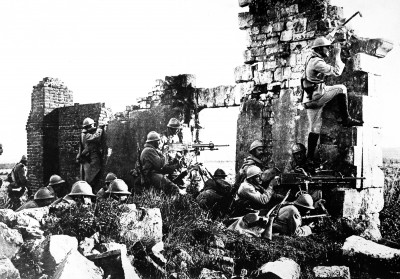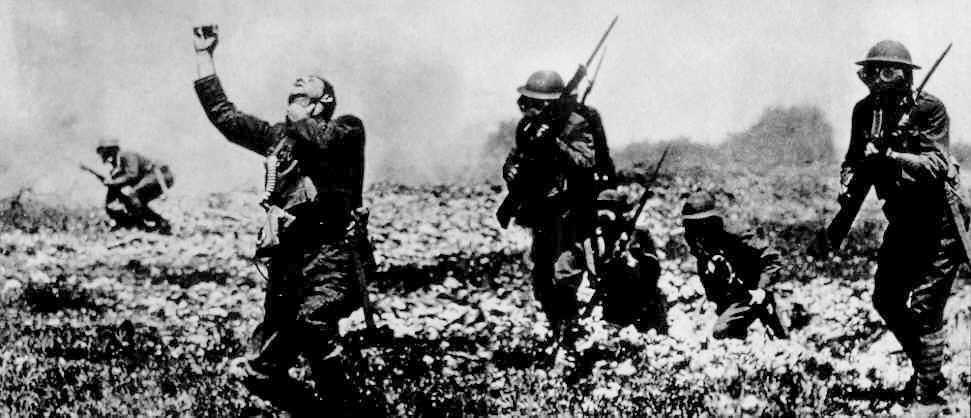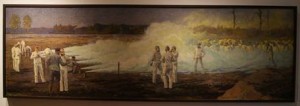History of Chemical Warfare: Poison Gas during World War I: Bayer Still Refuses to Take Responsibility
100 Years of Chemical Warfare

The 103rd anniversary of the first use of poison gas, manufactured by BAYER during WWI. This article by CBG Network first posted on GR in April 2015, traces the history of chemical weapons.
Today [April 22, 2015] marks the 100th anniversary of the first use of poison gas. In the spring of 1915 the company BAYER supplied about 700 tonnes of chemicals to the front. On April 22 about 170 tonnes of chlorine gas were used for the first time on a battlefield in Ypres, Belgium. A six km wide and 600-900 m deep gas cloud formed, drifting towards the French troops. This attack alone led to about 1,000 dead and 4,000 severely injured men. Poison gas attacks against British soldiers followed on 1st, 6th, 10th and 24th May.
Battle of Ypres
As early as in the fall of 1914, in response to a suggestion from the Ministry of War, a commission had been established to deal with the use of poisonous waste from the chemical industry. The commission was chaired by Fritz Haber (director of the Kaiser Wilhelm-Institut), Carl Duisberg of BAYER and the chemist Walter Nernst. The commission recommended the use of chlorine gas, which was a deliberate violation of the Hague Convention Respecting the Laws and Customs of War on Land, under which chemical warfare had been banned since 1907.
Carl Duisberg was personally present during early tests of poison gas and enthusiastically praised the new weapon: “The enemy won’t even know when an area has been sprayed with it and will remain quietly in place until the consequences occur.” Under Carl Duisberg’s leadership BAYER continued to develop increasingly lethal chemical weapons, first phosgene and later mustard gas. Duisberg vehemently demanded that they be used: “This phosgene is the meanest weapon I know. I strongly recommend that we not let the opportunity of this war pass without also testing gas grenades.” At BAYER´s headquarters in Leverkusen a school for chemical warfare was built.
Duisberg even commissioned the painter Otto Bollhagen to depict scenes of war production for the BAYER directors’ breakfast room. The painting shows the testing of poison gas and gas masks near Cologne.
by CBG Network
An estimated total of 60,000 people died as a result of the gas warfare started by Germany. Axel Koehler-Schnura from the Coalition against BAYER Dangers says:
“The name BAYER particularly stands for the development and production of poison gas. Nevertheless the company has not come to terms with its involvement in the atrocities of the First World War. BAYER has not even distanced itself from Carl Duisberg’s crimes.”
The German cities of Dortmund und Luedenscheid recently decided to rename streets named after Duisberg. Corresponding initiatives are under way in Frankfurt, Wuppertal, Bonn and Marl.
During the war BAYER became the biggest German explosives producer, the company also manufactured gas masks. Due to a price guarantee by the government, profits were elevated to undreamt of heights. Also during the Third Reich research into chemical war gases was carried out in BAYER laboratories. The inventor of SARIN and TABUN, Dr. Gerhard Schrader, became head of the BAYER pesticides department after WW II.
150 years of BAYER: Company History Whitewashed
Copyright CBG Network, 2015



